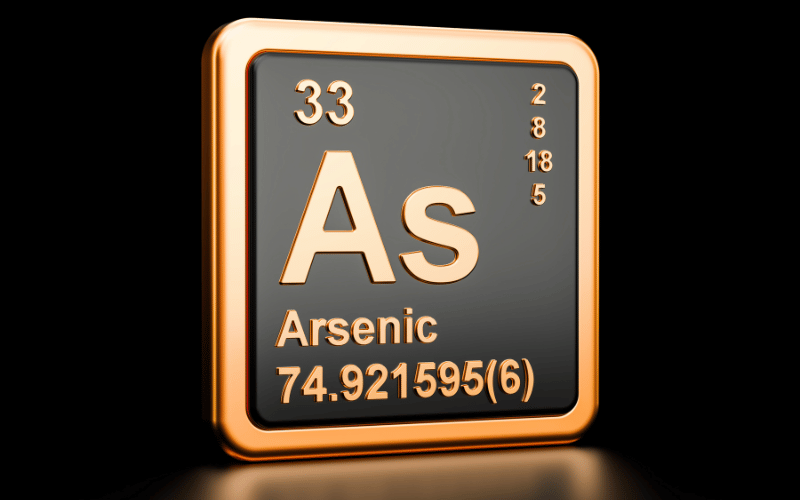Cause 7: Arsenic Exposure

Arsenic, a semi-metallic element, is ubiquitously found in nature. But, there’s a hidden menace behind this seemingly inert component. Prolonged and unregulated exposure to arsenic, especially inorganic arsenic compounds, has been linked to a myriad of health concerns, with skin carcinomas, like BCC, being paramount among them.
While arsenic naturally occurs in earth’s crust, human activities have escalated our exposure levels. Mining operations, pesticide application, and even some animal-feeding practices can release arsenic into the environment. It finds its way into our food chain, water sources, and, indirectly, our systems. In several parts of the world, groundwater used for drinking and irrigation contains alarmingly high arsenic levels. Consuming crops irrigated with such water or drinking from these sources directly further exacerbates exposure levels.
The skin is one of the primary organs that betray arsenic’s harmful effects. Chronic exposure initially manifests as hyperpigmentation or dark spots, often on the palms and soles. The skin may also develop thickened patches, referred to as hyperkeratosis. Over time, these benign manifestations can give way to malignant transformations. BCC is one such sinister outcome. The risk becomes graver when arsenic exposure couples with other risk factors, such as UV radiation.
Preventing arsenic-induced BCC necessitates a multi-pronged approach. Monitoring and regulating industrial processes that release arsenic is the first line of defense. At a community level, ensuring access to arsenic-free drinking water can bring about transformative health benefits. Personal protective measures also play a role. For those in high-exposure occupations or living in contaminated areas, regular health and skin screenings can facilitate early detection and treatment, reducing the morbidity associated with conditions like BCC.
This segment, arsenic, despite its natural occurrence, isn’t innocuous. Its carcinogenic potential, especially concerning skin malignancies like BCC, cannot be overstated. Both systemic and individual-level strategies can help mitigate this risk, underscoring the axiom that prevention, timely detection, and informed intervention can collectively curb the arsenic menace. (7)